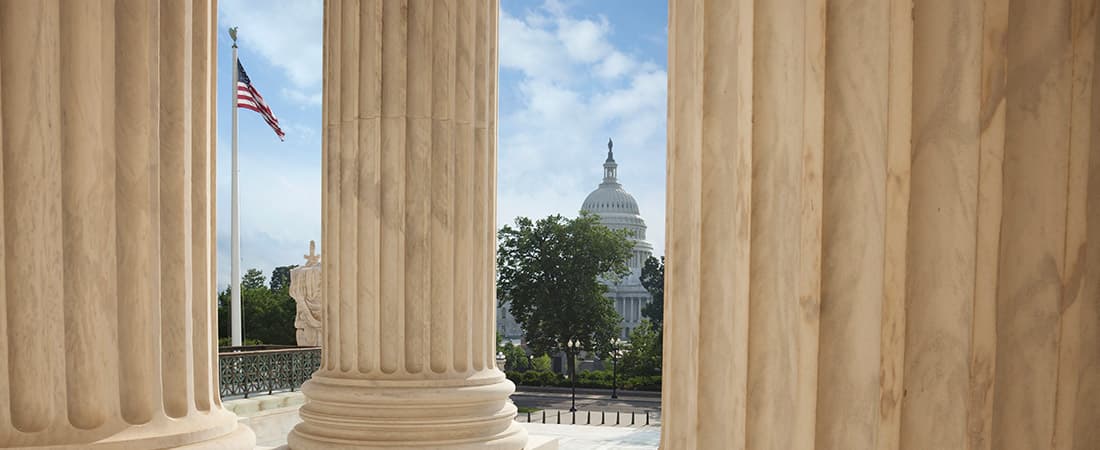May 02, 2018
The Government is Borrowing at Record Levels. Should You Care?
If you hold U.S. Treasuries, you may want to pay attention.

The average American household has around $8,000 in credit card debt. But that’s nothing compared to the amount of debt the U.S. government carries—and the hole is only getting deeper.
Recent figures from the U.S. Treasury show that government borrowing has reached an all-time high: $488 billion in the first quarter of the year, which ended in March. That’s $47 billion more than the Treasury had estimated, according to its press release.
For the year, the government is on track to borrow roughly $1 trillion, which would be an 84% increase over 2017, and the highest amount in six years, according to reports.
Why does the government borrow money?
The government borrows money when it doesn’t have enough to cover its expenses. The shortfall is called a deficit. Each year the deficit adds to the national debt, which is currently more than $21 trillion.
The government functions like any other entity or household—it has income and expenditures, and when it spends more money than it takes in its debt increases. The primary source of income for the federal government is income taxes paid by citizens.
So, when tax revenue isn’t enough to cover all of the expenditures, the government has to borrow. Think of it as not having enough money to buy groceries after paying all of your bills, so you use your credit card to cover the costs.
Who does Uncle Sam borrow from?
The most common way the government can get its hands on fresh funds is by issuing notes and bonds, also known as Treasuries. Treasuries are considered one of the safest, or least risky investments you can buy because they’re backed by the U.S. government.
Treasuries can come with various maturity dates, ranging from a few months to 30 years. The 10-year treasury is a benchmark for the U.S. economy, and are purchased by investors all around the world.
So, when the government needs to borrow, it issues bonds. And these can be purchased by individuals, corporations, and even foreign governments.
Why is the government borrowing so much?
It has to do with basic budgeting. Congressional leaders have a hard time balancing the national budget, and over time, our national debt—the sum of all of those budget deficits over time—has added up. And the government has to pay interest on top of the debt it’s already issued, creating even more debt.
As for where all of that money is going, more than half of government spending is allocated to social programs like Medicare, Medicaid, and Social Security. Spending on education, national defense, and other areas also eat up considerable portions of the national budget.
But why did borrowing recently hit record levels?
Legislative factors are at the root of it, including the tax cut law passed in December, which has led to lower-than-anticipated tax revenues so far. With no offsetting cuts to spending, the government needs to borrow more to make up the difference.
“I think that there are still a lot of buyers for U.S. Treasuries,” Treasury Secretary Steve Mnuchin said about the government’s accelerated borrowing, according to reports.
Despite the short-term boost in borrowing, the Treasury Department does expect the government’s borrowing needs to soften through the spring and summer months, according to reports.
Why government debt matters
The national debt is soaring, and the government is borrowing more than ever. It can be hard to see how it applies to you, and you may wonder why it matters.
While some level of governmental debt is generally acceptable—even good in some cases (allowing officials some monetary maneuverability during a recession, for example)—too much can cause economic problems Here’s why:
Treasuries can end up competing with corporate bonds, driving up interest rates, and leading to inflation.
More capital flowing into government bonds means less for the private sector.
Related articles

financial-news
Apr 07, 2025
Investing During Volatile Times

financial-news
Apr 03, 2025
How to Stay the Course Through Tariffs and Turbulence

financial-news
May 15, 2024
Rebirth of the meme stock craze? 5 brutally honest reasons why you shouldn’t be buying, despite the hype

budgeting
Jan 09, 2024
9 ways to celebrate financial wellness month

financial-news
Nov 09, 2023
What is a Recession?

financial-news
May 15, 2023
The Stash Way: Invest Regularly
By using this website you agree to our Terms of Use and Privacy Policy. To begin investing on Stash, you must be approved from an account verification perspective and open a brokerage account.
